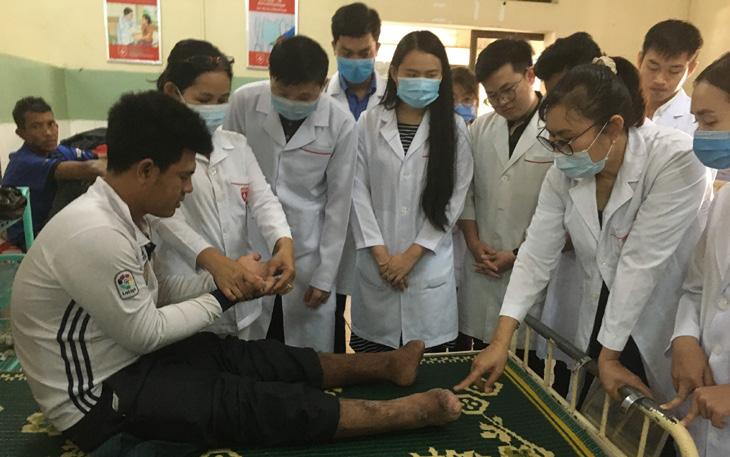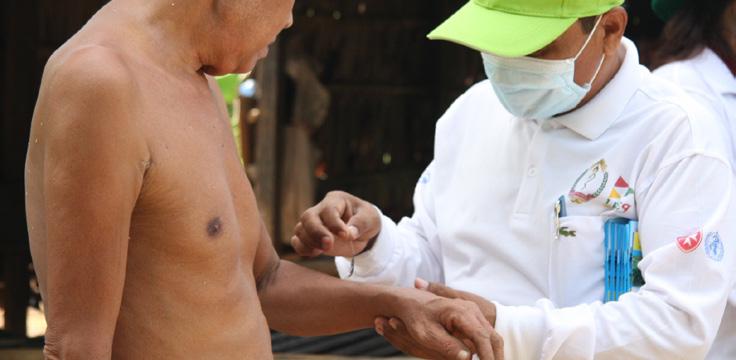As announced several months ago, the KKLRC rehabilitation center in Phnom Penh has closed its doors at the end of 2020.
LOOKING AHEAD - 25 YEARS OF DEDICATED SERVICE
Thanks to the strong partnership between the CIOMAL Foundation and the government, the issue of leprosy is particularly well managed and all patients have been transferred to state health centers.
The important transfer of capacities put in place upstream has allowed awareness activities, detection campaigns and training of medical personnel to continue; they are coordinated by teams trained by the CIOMAL Foundation. In fact, two doctors from these squads now provide consultations in the new 8-bed clinic built in partnership with the National Leprosy Control Program.
At the same time, mobile units continue to crisscross the country to identify new cases of leprosy and provide patients with appropriate treatment. In accordance with new WHO guidelines, communities are given prophylactic treatment to control the disease in the most affected areas. Thanks to these regular visits, the teams can also set up urgent projects, such as the construction of houses or simply toilets, as well as provide economic support through scholarships, for example.
2020: more than 11 consultations per day
This year 2020 has shown, if it were still necessary, the know-how of the teams trained by the CIOMAL Foundation: nearly 4’400 people came to consult the KKLRC center, both for dermatological and more general reasons. These visits allowed the detection of 15 new cases of leprosy and their immediate treatment; some patients were even able to undergo surgery on the spot, within a short time, which will ensure a better convalescence.
Early detection and prophylaxis
During the five detection campaigns conducted in Cambodia in 2020, 13 new cases of leprosy were detected.
This low rate is certainly attributable to three factors:
- Since the beginning of 2020, the National Program has decided, on the recommendation of WHO, to combine contact tracing and post-exposure prophylaxis activities for leprosy. This strategy has significantly reduced the time available and therefore the number of people screened.
- An important phenomenon of economic migration has been noticed: many people move to the big cities and are therefore less distant physically, humanely and medically.
- The effectiveness of the long-term work to raise awareness of the disease is bearing fruit. Combined with prophylactic treatment, leprosy transmission is decreasing.
Capacity building of the PAL Association (people affected by leprosy)
To share information or knowledge, training is provided monthly to all members of the association. In 2020, 176 members participated, sharing topics such as management, leadership, positive mindset, national disability, human resources and advocacy skills. These associative moments allow participants to be part of a circle in which they are welcomed, listened to and heard. All come together in spite of the disease, all share their experience with it, all leave with a desire to fight and a high level of morale.
Socio-economic support for people affected by leprosy
In 2020, the CIOMAL Foundation continued its commitment to support people affected by leprosy in several ways: sponsorship of forty-two students, food support for twenty-five people in need, distribution of forty water filters, assistance to more than forty families for sustainable development projects, construction of toilets and maintenance of nine houses.
Training of medical staff.


Detection campaign.
CIOMAL Foundation team.

I ACT TODAY
Every child deserves to receive a quality education, regardless of their family situation. Unfortunately, families affected by leprosy often face financial difficulties and are often unable to finance their children’s education. This is why the CIOMAL Foundation strives to fund the educational needs of children whose families are affected by the disease. With your help, we can give the new generation hope for a better future through education.

